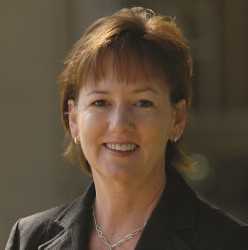Opinion: Drive Your Message Home And Make It Stick

Our state has become so urbanized and the media world has changed so much that it’s hard to cut through the clutter. We have to be saying the right things in the most effective, persuasive way to make our voices heard. Over time, it seems, the rules have changed.
That’s why the Agriculture Institute of Florida and the University of Florida’s Center for Public Issues Education (the PIE Center) have worked together for the past two years to research how we can tell our story using the words and the context that will resonate with consumers, elected officials, and other opinion leaders.
The PIE Center’s research team unveiled its most recent research findings at the Ag Institute’s 2012 Luncheon Workshop Series in March. The half-day workshop, attended by more than 60 communicators, educators, and students, generated thoughtful ideas and discussion. Most important, the participants were able to leave with some concrete takeaways that they can incorporate into their ongoing work communicating about agriculture.
Beneficial Backing
It’s important to note that this research had strong industry support. Numerous companies and organizations partnered with the Ag Institute to fund this research. Thousands were raised from Ben Hill Griffin, FFVA, Duda, Florida Sod Growers Cooperative, Florida Council of Co-operatives, Florida Cattlemen’s Association, Sugar Cane Growers Cooperative of Florida, Farm Credit, and the Florida Golf Course Superintendents Association. This kind of participation shows the level of industry interest in having solid social science research to point us in the right direction.
The PIE Center’s theme for its report was “stickiness.” Despite our best efforts to educate consumers and others about where their food comes from and why agriculture is so vital to Florida’s quality of life, our messages aren’t sticking. Effective communication must come before education, according to Rachel Divine, research coordinator for the PIE Center.
The researchers used focus groups to test a set of messages that were worded differently. These focus groups were considered young opinion leaders: 18- to 35-year olds who are registered voters with a post-secondary education. In the communication theory world, the terms “appeals” and “frames” are used to describe how the messages were tested. The messages were worded using logical, emotional, and ethical appeals. The messages also were framed so that those on the receiving end would feel threatened by a loss, encouraged by a gain, or neither.
Loud And Clear
The Ag Institute’s goal was to give ag communicators information to better build our messages, whether we produce citrus or sod, blueberries, beef, or milk. The PIE Center team (Dr. Tracy Irani, Divine, and graduate student Joy Goodwin) put together a solid list of recommendations for communicators to incorporate into their message development strategy. Here are a few:
- Use opinion leaders as the target audience for future communication and messaging strategies.
- Test communication materials with the target audience before release. What industry professionals find effective does not always fare well with consumers.
- Make sure to consider non-agricultural audiences. It can be common for organizations to communicate primarily within their direct stakeholder groups.
- Design attractive websites to ensure that key messages can be absorbed in two minutes or less and that messages are located on the home page.
- Identify the target audience before creating a website to ensure that the elements will appeal to that audience.
- Incorporate components into messages that are personally relevant to the target audience.
- Determine which kind of appeals (logical, emotional, ethical) work best with your particular audience.
There’s much more, and you’ll be hearing more about this research from the Ag Institute of Florida, The PIE Center, FFVA, and others as we look to put this to practical use in our day-to-day efforts.










